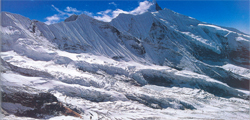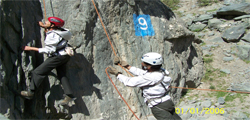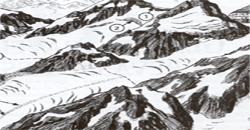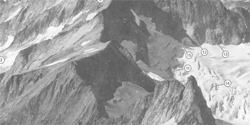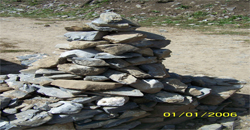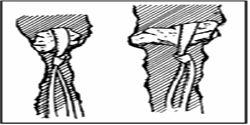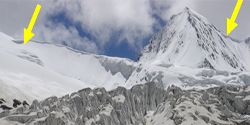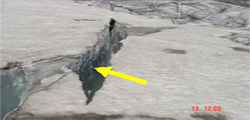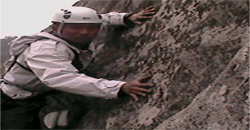Mountaineering Terminology
1. Acclimatisation. The adaptation of the human body to the rarefied atmosphere at high altitudes. |
||||||||||||||||
2. Arete. A sharp defined ridge of rock or ice. |
|
|||||||||||||||
|
3. Avalanche. The sliding away of surface material from a mountain, especially snow. |
|||||||||||||||
4. Anchor. Point where the rope is secured to the snow, ice or rock with either fixed bolts, rocks, trees or non-fixed gear to provide protection against a fall. |
|
|||||||||||||||
|
5. Belay. The device and technique employed by a climber to safeguard the party from the effects of a fall by one of it’s members. |
|||||||||||||||
6. Bergschrund. A gap or crevasse that appears near the head of a glacier where the neve field portion of the glacier joins the valley portion of the glacier. |
|
|||||||||||||||
|
7. Buttress. A rocky protuberance from a mountain slide or the rock mass between two gullies (But if narrow this may be called a ridge). |
|||||||||||||||
8. Cairn. A pile of stones used for marking the summit of a mountain. Cairns are also used to mark out routes where paths are not obvious. |
|
|||||||||||||||
|
9. Chimney. Gap between two rocks which is wider than crack and narrower than a gully. Chimney can be used to climb a rock face. |
|||||||||||||||
10. Chockstone. A stone, boulder or pebble, jammed in a crack or chimney. Artificial chocks in metal are now used for protection. |
|
|||||||||||||||
|
11. Col. A dip in a ridge usually between two peaks may be deep and wide enough to carry a motor road, or it may be a mere dip in an icy skyline. The way across a Col is known as a pass. |
|||||||||||||||
12. Cornice. A consolidated snow bank projecting over the edge of a ridge, plateau or corrie, and formed by prevailing winds. They may be temporary which are likely to Avalanche, or they may be permanent. |
|
|||||||||||||||
|
13. Crevasse. A crack in the surface of a glacier. On a dry glacier crevasses can be eassily seen and are not usually difficult to avoid. They can be wide and deep but this is not always the case. | |||||||||||||||
14. Free Climbing. Climbing without using any mountaineering equipment like pitons, nuts, runners, etc is called free climbing. Natural holds are used during free climbing. |
|
|||||||||||||||
Training
The Jawahar Institute of Mountaineering and Winter Sports (JIM&WS).
Contact Us
The Jawahar Institute of Mountaineering and Winter Sports (JIM&WS)
Address: Nunwan Pahalgam (J&K)
Telephone: 01936-243129
01936-243129 (Training Section)
01936-243002 (PA to Principal)
9906967831 (Training Clerk)
9906967822 (Sub centre, Sanasar)
9906967821 (CPIO)
E-mail CPIO: principal@jawaharinstitutepahalgam.com
Fax:01936-243129
E-mail: principal@jawaharinstitutepahalgam.com
© Copyright JAWAHAR INSTITUTE OF
MOUNTAINEERING & WINTER SPORTS NUNWAN, PAHALGAM.Corporate Mail
Design, Development and Hosting of Website by Say Technologies




